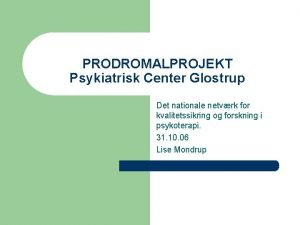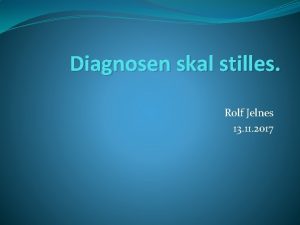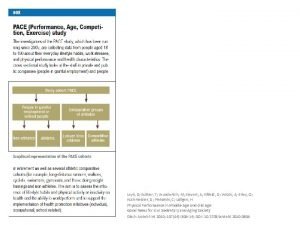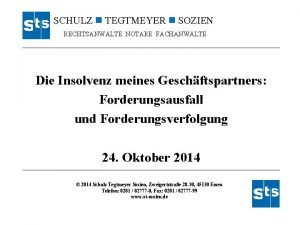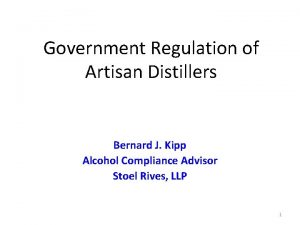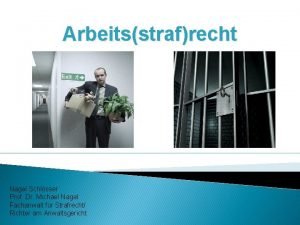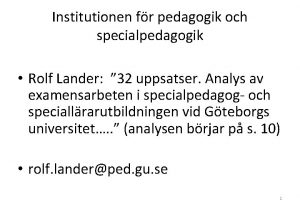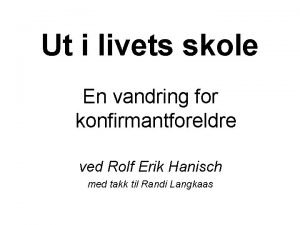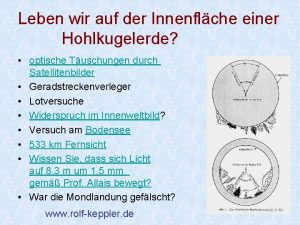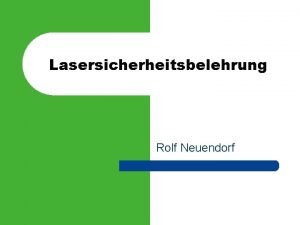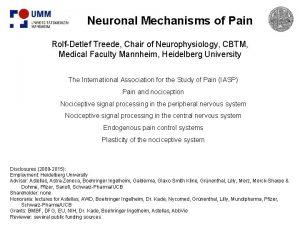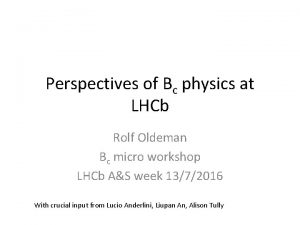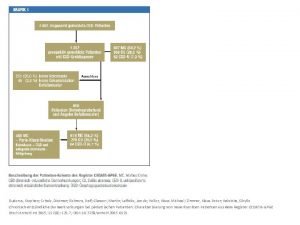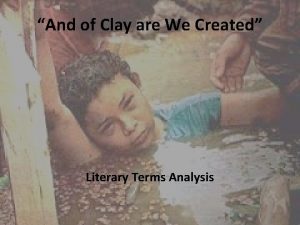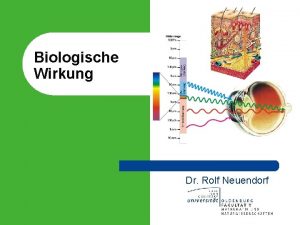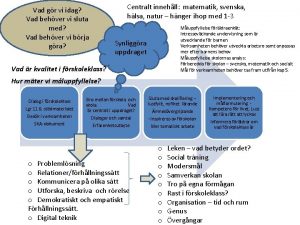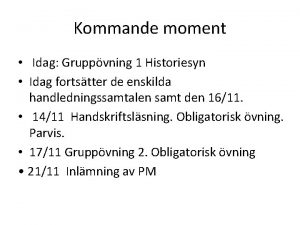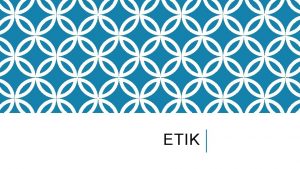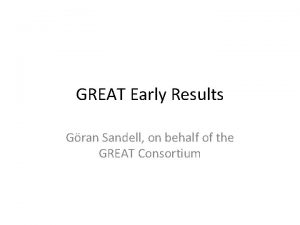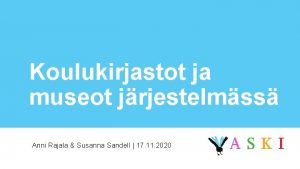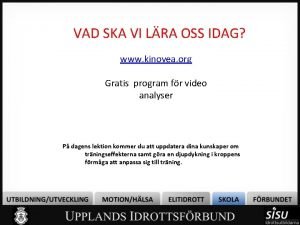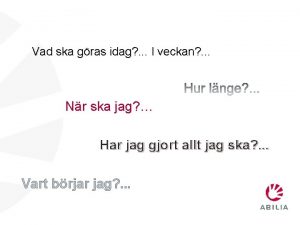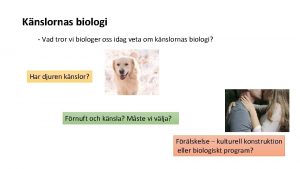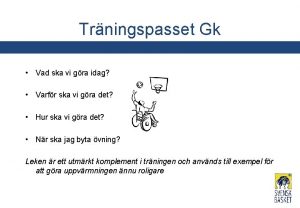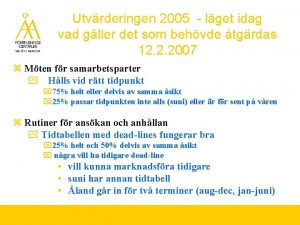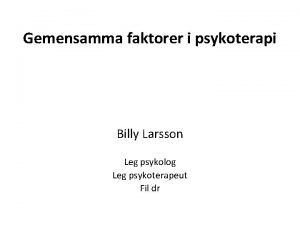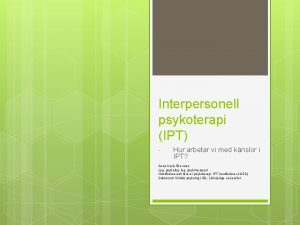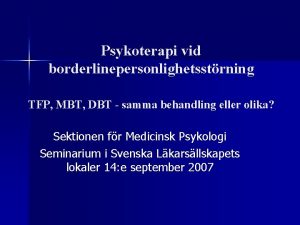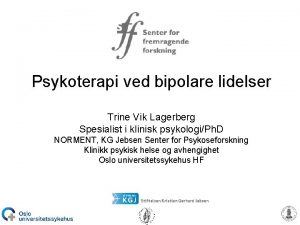Vad vet vi idag om psykoterapi Rolf Sandell
























![• ”[A] sound argument for not limiting psychotherapeutic options to CBT or any • ”[A] sound argument for not limiting psychotherapeutic options to CBT or any](https://slidetodoc.com/presentation_image_h2/c142357305728ac461537a392a6c15e5/image-25.jpg)

![Personalized Advantage Index [CBT)(ADM] • • (De. Rubeis et al. , 2015) Age Intelligence Personalized Advantage Index [CBT)(ADM] • • (De. Rubeis et al. , 2015) Age Intelligence](https://slidetodoc.com/presentation_image_h2/c142357305728ac461537a392a6c15e5/image-27.jpg)
- Slides: 27

Vad vet vi idag om psykoterapi? Rolf Sandell Stockholm 26 oktober 2017 © Rolf Sandell, 2017

© Rolf Sandell, 2017

© Rolf Sandell, 2017

• Effektstorlek (ES) = 0, 80 -If psychotherapy were an intervention designed to help people lose weight, the average American male would lose ~54 lbs. The average American female would lose ~62 lbs. -If psychotherapy were an intervention designed to increase intelligence, the average person would gain ~12 IQ points. -If psychotherapy were an intervention designed to increase annual income, the average salaried employee in America would get a $27, 200 raise (from $37, 500 to $64, 700; based on 2008 data from the US Bureau of Labour Statistics). © Rolf Sandell, 2017

”Medelvärdesillusionen” © Rolf Sandell, 2017

120 Burnout patients (Oldenburg Burnout Inventory, OLBI) © Rolf Sandell, 2017

120 Burnout patients © Rolf Sandell, 2017

© Rolf Sandell, 2017

© Rolf Sandell, 2017

En nödvändig insikt: • • • Ca 10% börjar inte Ca 20% avbryter 40 -50% (av dem som är kvar) förbättras, 40 -50% förändras inte och 5 -10% försämras (fast kanske ca 20%? ) (Kraus et al. , 2011; Swift et al. , 2017) © Rolf Sandell, 2017

Och den variationen är inte slumpmässig! © Rolf Sandell, 2017

Norcross & Lambert, 2006: © Rolf Sandell, 2017

© Rolf Sandell, 2017

Patienten är en avgörande ”terapeutisk faktor” • • • Stödjande omgivning OK sociala förhållanden Funktionsnivå Mentala förutsättningar: ”jagstyrka”)(PD Bra relationer (inre och yttre) Säker anknytning (också till terapeuten) Optimism/pessimism Preferenser Förväntningar ”Inre” motivation Självreflektion Lyckliga (eller olyckliga) tillfälligheter © Rolf Sandell, 2017

De terapeutiska relationerna … • • • Behandlingsalliansen Överföringen/ Den reella relationen Den reparativa/kompensatoriska relationen Den ”transpersonella” (biologiska? ) relationen © Rolf Sandell, 2017

… och terapeuten © Rolf Sandell, 2017

© Rolf Sandell, 2017

• • • Mentalt välbefinnande och ”god anpassning” ”Empathy” (Rogers) ”Nonpossessive warmth” (Rogers) ”Congruence/genuineness” (Rogers) ”Unconditional regard” (Rogers) Relationskompetens Trygg anknytning Professionell erfarenhet Ideal och attityder Vårdorganisationens struktur, ”trygghet” och ledarskap © Rolf Sandell, 2017

Men ”metoden”, då? © Rolf Sandell, 2017

Stiles, Barkham, Clark-Mellor & Connell, 2008 (N = 5613) © Rolf Sandell, 2017

• ”In the past 4 decades about 500 randomized trials have examined the effects of psychological treatments of adult depression. In this article the results of a series of meta-analyses of these trials are summarised. Several types of psychotherapy have been examined, including cognitive behaviour therapy, behavioural activation therapy, interpersonal psychotherapy, problem-solving therapy, nondirective supportive therapy, and short-term psychodynamic psychotherapy. All therapies are effective and there are no significant differences between treatments. ” (Cuijpers, 2017) © Rolf Sandell, 2017

” 14 studies totaling 1073 patients were included. PDT was found to be significantly more effective than control conditions (g = 0. 64). PDT did not differ significantly from alternative treatments at post-treatment (g = 0. 02), follow-up (FU) up to a year (g = -0. 11), and FU past a year (g = -0. 26). … Overall, PDT was shown to be as efficacious as other active treatments that have been studied for anxiety disorders” (Keefe, Mc. Carthy, Dinger, Zilcha. Mano, & Barber, 2014) © Rolf Sandell, 2017

Är olika terapiformer lika bra i genomsnitt – men på olika patienter? © Rolf Sandell, 2017

Aptitude x treatment (x outcome) • Beutler: Systematic Treatment Selection • Dance & Neufeld: internal/external coping • Blatt: anaclitic v. introjective personality, perfectionism • Lazarus: förväntningar • Swift m fl: preferenser • Den kritiska frågan: Vilken psykoterapi för vilken patient (och med vilket slags effekt)? © Rolf Sandell, 2017
![A sound argument for not limiting psychotherapeutic options to CBT or any • ”[A] sound argument for not limiting psychotherapeutic options to CBT or any](https://slidetodoc.com/presentation_image_h2/c142357305728ac461537a392a6c15e5/image-25.jpg)
• ”[A] sound argument for not limiting psychotherapeutic options to CBT or any other single treatment is that no approach will work for all individuals. Thus, it is essential that alternative approaches are available for those who fail to benefit from the initial treatment” (De. Rubeis & Lorenzo-Luaces, 2017). • Personalized /customized treatment © Rolf Sandell, 2017

Systematic Treatment Selection (Beutler, Clarkin & Bongar, 2000) • • • Problem severity/functionality Problem complexity Subjective suffering/distress Reactance/resistance potential Internal/external coping style www. systematictreatmentselection. com © Rolf Sandell, 2017
![Personalized Advantage Index CBTADM De Rubeis et al 2015 Age Intelligence Personalized Advantage Index [CBT)(ADM] • • (De. Rubeis et al. , 2015) Age Intelligence](https://slidetodoc.com/presentation_image_h2/c142357305728ac461537a392a6c15e5/image-27.jpg)
Personalized Advantage Index [CBT)(ADM] • • (De. Rubeis et al. , 2015) Age Intelligence Marital status Employment status Life events Personality disorder Previous ADM © Rolf Sandell, 2017
 Psykoterapi glostrup
Psykoterapi glostrup Vet to vet
Vet to vet Vilken är kärnan i ekologismen
Vilken är kärnan i ekologismen Snögränsen idag
Snögränsen idag Pitting ødem
Pitting ødem Rolf wegner
Rolf wegner Rther
Rther Rolf otto neukirchen
Rolf otto neukirchen Smärtanalys
Smärtanalys Rolf kipp biography
Rolf kipp biography Michael nagel rechtsanwalt
Michael nagel rechtsanwalt Rolf classen
Rolf classen Rolf schmucker
Rolf schmucker Msc traction
Msc traction Rolf lander
Rolf lander Rolf ent
Rolf ent Rolf erik hanisch
Rolf erik hanisch Hohlwelttheorie
Hohlwelttheorie Laserklassen
Laserklassen Rolf-detlef treede
Rolf-detlef treede Rolf oldeman
Rolf oldeman Rolf claßen
Rolf claßen Fiskars maria korkeila
Fiskars maria korkeila Rolf ent
Rolf ent And of clay we are created
And of clay we are created Radioactive
Radioactive Rolf neuendorf
Rolf neuendorf Rolf neugebauer
Rolf neugebauer
